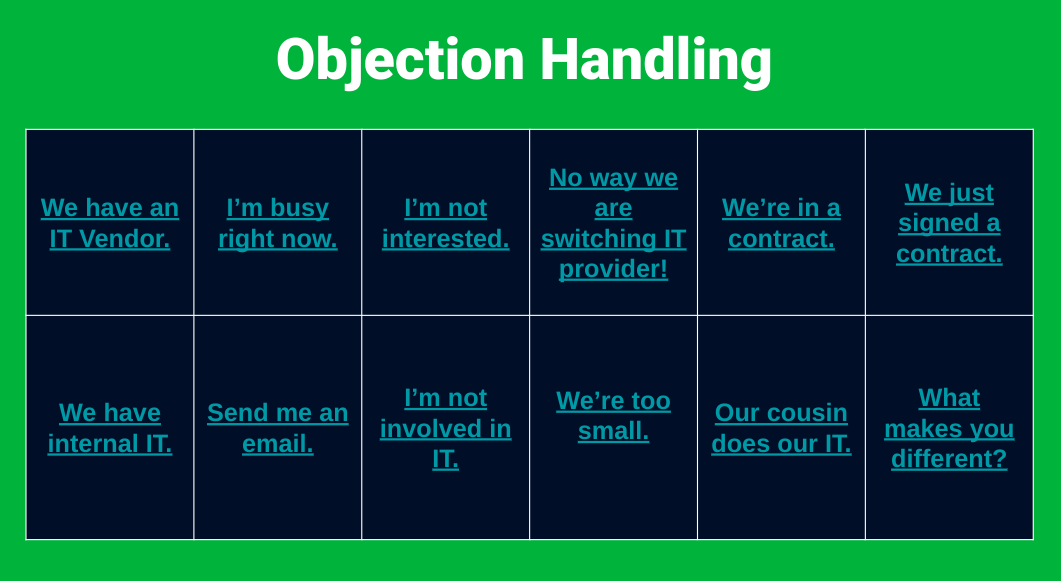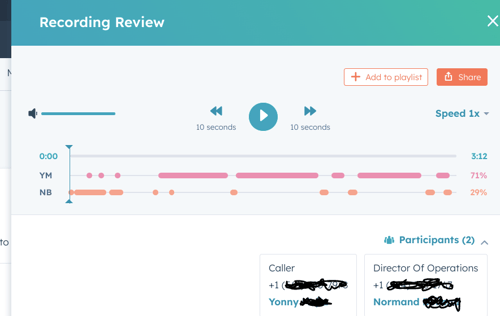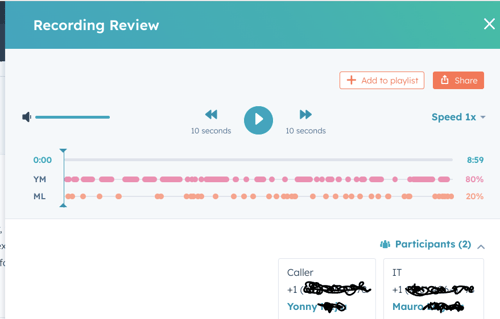
Who here wants MSP appointment-setting programs to generate new logos!
You? Ha, me, too! We have the same goals!
Good, then let's get right to it -- here are the keys to the MSP appointment setting process that generates MRR.
And no, we won't need to bribe with Amazon gifts or insane commissions.
Nor will it take us sending a million more cold emails Google is clamping down on spam (as they should) because inboxes are getting ruined by sales people and marketers.
Instead, we need to think like Henry Ford who wisely said, “there are no big problems — there are just a lot of little problems.”
So let's solve every one of the little problems, shall we?
Storytime.
During a first meeting with an MSP President, I asked him to describe his client acquisition strategy and here was his reply:
"That's why I'm talking to you! You guys do outbound, right? You're the experts."
Well, let's just say we agreed to end the conversation soon thereafter...
Because here's the cold-hard truth about outbound appointment-setting: it isn't an acquisition strategy, it's simply a means of getting meetings with qualified prospects, that is it.
However, many MSPs fall into the referral mindset trap -- equating cold appointments with referral leads.
"I'll close 60% of the prospects you put in front of me!!"
Haha, I'm sorry to disappoint, but no you will not hit 60% with these.
Unlike referrals, cold prospects are not waiting by the their phone, eager to be interrupted with checkbooks in hand to sign your 3-year IT contract.
"We just need the contract end-dates -- it's all about timing."
Sure, timing for a few months ahead of contract renewal date can help get sales conversations going. But that's about it. Timing in of itself is not why someone would switch to your MSP, it's just the time they are entertaining a switch somewhere. This is not a strategy by any stretch. Timing doesn't give your MSP an advantage. Please remember that prospects receive cold-calls daily -- there will be other cooks in the kitchen just waiting for the incumbent to die so they can pounce like a vulture.
"But we have a unique process and our people are the best!"
Please stop. Stop talking about yourself and flip that around into the business impact your unique process and people have on your clients. Because cold prospects don't care about your process. They don't care about your people, how many certifications they have, awards won or number of years in business. They care about one thing and one thing only: themselves.
So hey, we're in this together, so can we think of a creative acquisition strategy that draws prospects towards YOU even when the timing is off?
What does your MSP offer that is of so much VALUE , that prospects would be CRAZY not to switch before their contract renewal date?
Or
What can your MSP sell today to a prospect who is in contract with an IT provider? What small project or solution can get your foot in the door before local competitors?
Answer either of those questions followed by a client story which includes business impact figures and then you can brag about having a good MSP client acquisition strategy.
How could a complete stranger possibly convince you to schedule a meeting with his company next week?
It wouldn't be easy but here's the answer: by bringing useful insights and ideas that are relevant to you.
In the video below, Josh Braun gives us a great example.
Do your cold-calls sound like Josh's? Because if not, it may explain why results aren't great.
If your hunter goes in with a "hey how is IT support going?" or "just following up!" then don't be surprised with crappy results. No one has time for this.
MSP leaders reading this, please, we give your outbound BDRs the unique insights they need to sell the first appointment.
Choose a vertical (or a few but not too many)
What expensive business problems for that vertical does your MSP understand and are able to solve?
MSP Appointment-setting services is not so different from playing sports. It takes skill, persistence and a positive mindset.
And like sports, there are good days and bad days. And if we practice with intensity, we can improve for the real game.
Imagine your favorite athlete or musician for a moment. Can you imagine they'd be where they are without practice?
No way, right?!
In order to ensure your hunter is practicing is to make it part of the process. We got to track practice!
The same reason Incident Response Plans and Backups are tested, a hunter also needs frequent testing to ensure they sound crispy and are on their toes.
In Simple Selling, we practice as a group at least 3 times a week. We take turns being the prospect and the caller; we focus on different parts of the call (intro, pokes, pitching, objection handling, etc.), and we get many repetitions until we're sounding sharp.
Some appointment-setters can take constructive feedback well. They'll dissect a recorded call, acknowledge mistakes and try not to repeat a mistake. They won't fix everything overnight, but they will show progress and genuinely try.
But others are the opposite. They don't change. They don't hear mistakes in their calls. They just continue to repeat their mistakes and sort of shrug it off as the prospect is a bad fit.
Your MSP wants the coachable type, right? We all want humble people who strive to improve and learn to be on our side, right?
Therefore, in a perfect world, we figure this out during the hiring process.
Here are a few ways to uncover coachability.
For one, ask for examples in their previous jobs of where their manager gave them constructive feedback; and second, do a live role play and give constructive feedback to see how the take it.
Also, bear in mind that coachable people tend have examples in their professional and personal lives of times they had to improve to get something they wanted. Look for examples in sports, hobbies and ask their references specifically about the person's improvement over time.
If you have someone who doesn't seem to fit the mold, move on. They won't work out no matter what you do.
Which appointment setter do you like better?
Tim or Doris?
Here’s the scenario. Imagine you're a prospect and an MSP salesperson cold-calls you.
You tell Tim and Doris you’re in a contract with another IT provider alread and you you do not see the point in taking a meeting.
Here’s Tim:
“We are a top managed services IT provider with over 25 years helping companies like yours in Miami. I understand you are in a contract already. Many of our clients were also in a contract before meeting us. Do you have some time maybe next week for an introductory meeting?
Here’s Doris:
“It sounds like you are happy with your current IT provider and I respect that you are in a contract. Our intention is mainly to provide high value information that you can use now, even if you are in contract. We helped a medical client about your size find 2 to 3 surprising gaps in their network's security. It's just our way of introducing ourselves and bringing value. Would you be opposed to discussing this and how you and your provider can check on these potential gaps?”
Doris’s approach works better. Why? Because just as Tim is pushing his agenda, the prospect will likely enter the Zone of Resistance (ZOR).
"The ZOR is a reflex reaction to self-serving salespeople who try to control your decision." -Josh Braun
Nobody likes being told what to do.
Meanwhile, Doris has positioned herself as an ally. Rather than pushing her agenda, she is leaning back.
She's laying out the opportunity and letting the prospect decide -- she’s surrendering control and is detached from the outcome.
Any good competitor knows what to expect from the competition before the whistle is blown!
Similarly, in appointment-setting programs, objections are well known and it's just a matter of being ready that makes a difference.
Below are common ones we practice during our warm-ups.

Your hunter has to role play these objections! The purpose of practice is to respond with just the right tone, just the right pace and to use words that detach from commission so that the prospect feels no pressure.
Because if the hunter's tone is argumentative, they lose.
If the speed is too fast or too slow, they can come across as fake or aggressive.
If the words fail to acknowledge the prospect's logic, they start to feel the pressure.
Some high-level concepts to understand is that most objections are not real objections, they are excuses or denials.
Brian Burns explains this concept well in the following video.
Therefore, according to Brian, if a hunter is getting many objections, it's probably because they are not peaking enough curiosity in the first place. They are probably pitching too soon. When we move faster than the prospect, they simply don't comprehend the value in a meeting and so they refuse.
So to recap, make sure your hunter is practicing the common obstacles, that they are mindful of not only their tone, but also in responding with words of understanding and curiosity and at a good pace.
And last but not least, our cold-callers need to poke the prospect's critical thinking before asking for the meeting, otherwise, they will get ahead of the prospect and then get slammed with stop signs.
Which looks like a better cold-call?
Call A or Call B?
Call A

The first line, in pink, represents when the BDR is speaking, and the second line, in orange, is the prospect speaking.
Call B

Call B is the winner! Because it's a real conversation. The prospect is talking, the BDR, too. Value exchanged and a first-time appointment was booked.
Call A had a different ending. No appointment. You see those long pink lines by the BDR? That represents long monologues, usually some form of appointment begging or pitching. And the prospect in orange, he or she is using one or two word replies.
Call A is no bueno, es muy muy malo.
How can we help this BDR improve?
First things first, let's remember the 80/20 rule.
80% of results stem from 20% of the causes.
Therefore, less feedback is better. We may want the BDR to improve in many ways, but if we highlight 5 problems in a single coaching session, they will feel overwhelmed and will likely struggle to make gains.
My recommendation here would be to show the BDR the visuals and see if they pick up on the issue themselves.
==
Coach: What do you see is happening with Call A vs Call B?
BDR: Uh, well, in Call B, I got the appointment. It was a longer call. The prospect was more receptive.
Coach: Ok more receptive, and why is that? Let's listen to the beginning of the call.
==
Try to give the BDR the opportunity to realize the problem you're trying to highlight for themselves by asking them questions and using the data as a backdrop for your questions.
Peel the onion! Get to the point and focus on that one thing to see continuous improvement!
In order to coach effectively, we need facts, not hunches. We need the sales stack data!
Therefore, we need the proper tools to track call quality. Ideally, this means having call recordings, transcriptions, call outcomes, call durations, time between calls, call volume, call notes and sequences.
Second, we need a process for digesting this data in order to analyze and be helpful. Because that's the point. TO HELP THE BDR.

Michael Scott is yelling at us Coaches to stop focusing so much on reprimanding over low dial volume!
Yes, it's undeniable that more volume helps get appointments, it's true. Your BDRs already know this. Let's face it, dial volume is largely driven by the BDR's intrinsic motivation, financial incentives and the size of the list.
But volume is the low hanging fruit, and once it's peaked, it's simply diminishing returns.
For example, a BDR that is dialing 1000 a month at a 8% connect and set rate of 2% would book 2 appointments per month. Even if we tell her to dial "200 more!" it would not generate another appointment and she would more likely start looking for another job. Whereas if we focused on actually coaching, she could improve set rate to 4% which in turn would get 3.2 appointments, or a 50% improvement!
The coached BDR is less likely to quit and it's a scalable improvement that will carry into the future.
One of the hardest parts of cold-calling is simply getting a hold of the right decision-makers.
C-levels are extremely busy. They are always in a meeting or slaying Slack messages or putting out fires. Let's just say it's not easy for us to catch them at a "good time."

Why should we care?
Because if a Business Development Rep (BDR) can't connect at least 4 times a day, the odds of MSP appointment-setting going well declines substantially.
And not only that, but another risk of low connect rates is BDR burnout. Think about it.
Would you like a job where you make 60 cold calls and only get to speak to someone once?
Receptionists, or as we call them, "Gatekeepers", are the first barriers BDRs encounter. In our experience, the key is to be patient. Let's not burn the bridge by being too pushy or desperate!

What matters isn't so much what we say, it's how we say it and that we are respectful and curious instead of pushy and sale-sy.
According to Orum, a SaaS calling platform, in over 7 million calls placed on their tool, they've observed that leaving voicemails leads to a higher pick-up rate.
We haven't measured the impact on pickup rates on our end, but we have seen increases in email open rates and email replies.
For example, here is a simple voicemail template:
"Hi John, this is Derek. I emailed you today with the subject line "cyber-insurance readiness." If have a moment, please let me know what you think of my question. Thank you, and have a great day."
We use voicemails to point prospects towards our emails because these contain more information and it's in a place where prospects can digest it better and reply with a click.
Not all replies are positive, and this is OK. Because any reply is better than nothing. A "no, thank you" means we can stop wasting our time and move on to the next prospect in our queue.
Unless an MSP is targeting very small businesses or start-ups, it's fair to say that most decision-makers aren't deciding on vendor relationships alone, in fact, they are part of a committee with many decision-makers and influencers.
According to Gartner, the typical buying group for a complex B2B solution involves six to 10 decision makers‚ each armed with four or five pieces of information they've gathered independently and must deconflict with the group.
This is why BDRs should hunt the account, not the contact.
So, what does this look like?
During cold calls, it means asking for different decision-makers, in sequence emails, it means enrolling multiple contacts, and in LinkedIn, it means connecting with more than one decision maker.
Once a week or so we send an email with our best content. We never bug you; we just send you our latest piece of content.
